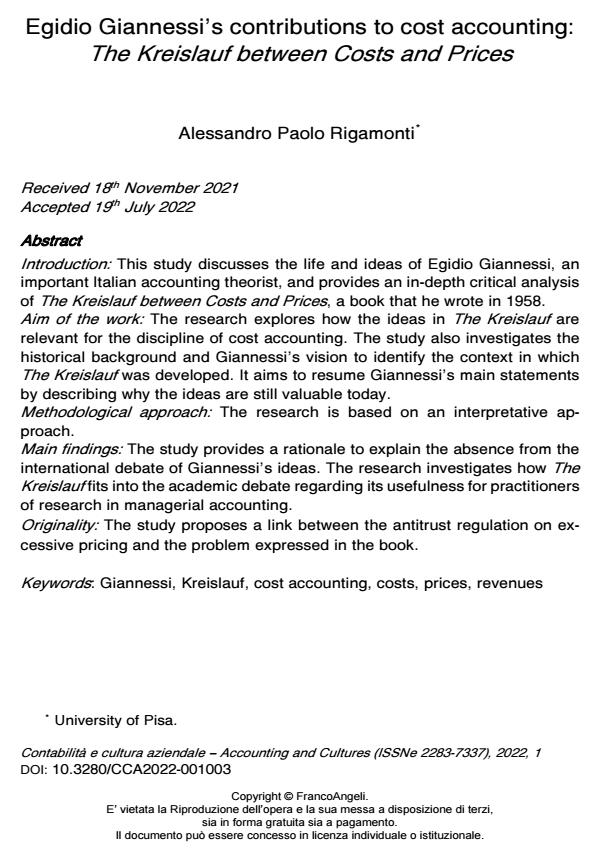Egidio Giannessi’s contributions to cost accounting: The Kreislauf between Costs and Prices
Journal title CONTABILITÀ E CULTURA AZIENDALE
Author/s Alessandro Paolo Rigamonti
Publishing Year 2023 Issue 2022/1
Language English Pages 25 P. 29-53 File size 128 KB
DOI 10.3280/CCA2022-001003
DOI is like a bar code for intellectual property: to have more infomation
click here
Below, you can see the article first page
If you want to buy this article in PDF format, you can do it, following the instructions to buy download credits

FrancoAngeli is member of Publishers International Linking Association, Inc (PILA), a not-for-profit association which run the CrossRef service enabling links to and from online scholarly content.
Introduction: This study discusses the life and ideas of Egidio Giannessi, an im-portant Italian accounting theorist, and provides an in-depth critical analysis of The Kreislauf between Costs and Prices, a book that he wrote in 1958. Aim of the work: The research explores how the ideas in The Kreislauf are relevant for the discipline of cost accounting. The study also investigates the historical background and Giannessi’s vision to identify the context in which The Kreislauf was developed. It aims to resume Giannessi’s main statements by describing why the ideas are still valuable today. Methodological approach: The research is based on an interpretative approach. Main findings: The study provides a rationale to explain the absence from the in-ternational debate of Giannessi’s ideas. The research investigates how The Kreis-lauf fits into the academic debate regarding its usefulness for practitioners of re-search in managerial accounting. Originality: The study proposes a link between the antitrust regulation on exces-sive pricing and the problem expressed in the book.
Keywords: Giannessi, Kreislauf, cost accounting, costs, prices, revenues
Alessandro Paolo Rigamonti, Egidio Giannessi’s contributions to cost accounting: The Kreislauf between Costs and Prices in "CONTABILITÀ E CULTURA AZIENDALE" 1/2022, pp 29-53, DOI: 10.3280/CCA2022-001003